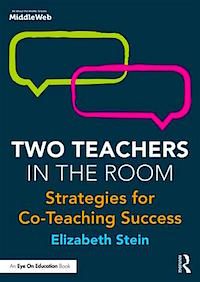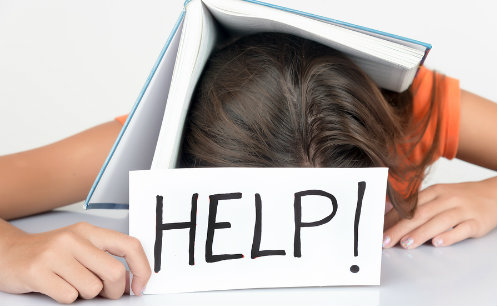Inclusion Challenges? For Me, It’s Dyslexia
A MiddleWeb Blog
 It’s check-in time, co-teachers! So here’s the question to ask yourself:
It’s check-in time, co-teachers! So here’s the question to ask yourself:
What is the ONE thing that you would say challenges you the most as a teacher in an inclusive setting?
Once you select your one thing, jot it down, and keep it handy for us to return to once you have read this post.
What’s my one thing, you might wonder? Well, thanks for asking!
As I look over the themes on the pages and pages (and pages!) of anecdotal notes from my collaborations with teachers and students through this year, dyslexia is highlighted as a frequently revisited topic from a variety of teachers, grade levels, and districts.
Here are a few frequently asked questions:
How do I adapt classroom materials when my student is reading so far below grade level?
What can I do to make my student feel like a part of the literacy lesson when he is so dependent on others to help him read?
My student has deep background knowledge and above grade level listening comprehension, but she is reading so far below grade level, I just can’t figure out how to include her in whole class reading lessons.
My conversations with students indicate similar frustrations. Comments like:
I just don’t feel smart enough—my teachers are there for me, but it’s embarrassing to need their help all the time.
The worst part of my day is when we have to read something—and, well, that is like the whole day!
I used to like school, like when I was 5 or 6, but not anymore. Now, I spend a lot of class time trying to pretend that I can read like the rest of my class—but I just can’t. And don’t even ask me to write something…then everyone can actually see how different I am.
This sampling is just the beginning of much needed conversations between educators and students about how classroom instruction may be designed to meet the needs of intelligent, capable learners who experience dyslexia as part of their learning profile.
Instructional Tips and Strategies
1. Emphasize a strong background knowledge base. Focus on ideas, not specific decoding or spelling errors.
2. Consider strategies to build self-efficacy. We must guide students to believe in their abilities and recognize their strengths to guide them to push through challenges. It is a must for a strong learning foundation.

So, increasing self-efficacy is the answer! Consider guiding your students to identify and apply their strengths to push through challenges – and start to see them push through any challenge using the power you help to create! To read more about why we should focus on self-efficacy, and how to do it, click here for more information.
3. Use recording apps or devices—such as Dragon Dictation or voice memo—to have students listen to texts and express their ideas orally to guide their writing process.
4. Set up incremental opportunities for success. Break down tasks into manageable, achievable segments—and build in reasons for students to self-motivate and push through challenges.
5. Create opportunities for students to apply their natural right-brain talents such as artistic abilities, researching topics, problem solving, and leadership abilities. Tap into your students’ natural talents and interests.
Check out this We Are Teachers resource, and introduce your class to Sketch Notes—it is an amazing opportunity for providing multiple means of action and expression—while tapping into right brain strengths and talents to guide comprehension and long-term learning. This Sketch Notes app may also be something you want to include as an added digital option to the student generated notes (always thinking with Universal Design for Learning in mind!).
6. Use mind maps to organize students’ thinking in all content area subjects. Here’s another great mind map resource from Mind Tools. And if you are an “I need the steps to mind mapping” kind of person, then check out the information from the creator of mind maps, Tony Buzan—right here! Wait! The resources are never ending—check out this link for 11 mind mapping apps and/or web resources.
More Essential Resources
If you are interested in learning more about how to design instruction with the needs of dyslexia in mind…check out some additional resources here:
- Understanding dyslexia from Understood: Resources for teachers and parents
- International Dyslexia Association
- Resources from the Yale Center for Dyslexia and Creativity
- Dyslexia basics from ldonline
- 5 helpful websites from the Dyslexia Training Institute
OK, so there you have it…my one thing, with some solutions to guide action steps and potentially powerful positive learning experiences.
And now is the time for you to return to your one thing. (If you just kept reading and never wrote it down, that’s fine…it’s not too late!) Let’s use the comments section below to seek solutions to your selected one challenge at this point in your school year.
Ready, Set, Share! And let the solution seeking and action steps begin!
___________________________________________________________________________




































